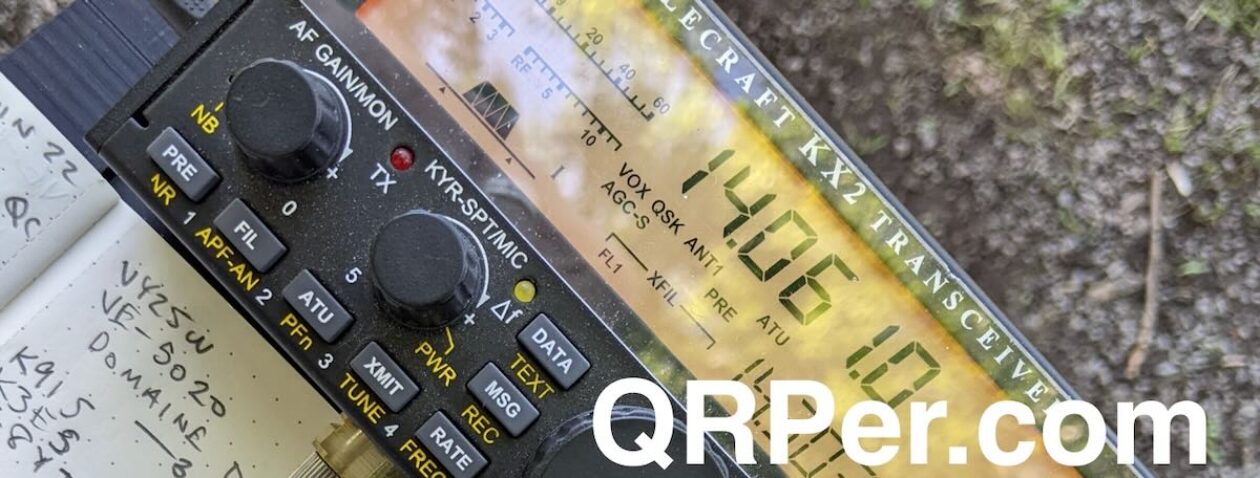Many thanks to Joshua (KO4AWH) who shares the following update to his previous guest review of the ATU-10 automatic antenna tuner:
 Update on the ATU-10: new firmware released
Update on the ATU-10: new firmware released
by Joshua (KO4AWH)
The short story is that David N7DDC has a Firmware update with a new tuning algorithm that seems to fix the previously seen failure to find a decent match. As noted earlier in comparison with the Elecraft T1, the ATU-10 still does not necessarily get as close a match to 1:1 SWR but it now does indeed find a good match making this tuner my go to for use with my IC-705.
Not previously mentioned, the ATU-10 is also designed to work with the IC-705 for tuning commands when connected with a TRS 3.5mm cable, not just as an auto tuner when given a signal. And, in practice it works just as it should. I actually took the IC-705 and the ATU-10 and worked a SOTA/POTA with the beta version of this new firmware. I ran a 35’ wire and it worked great allowing me to work 40m, 20m, 15m and 6m for a total of 26 contacts. As a followup to my previous testing with the prior firmware 1.4, below are my results with the current new 1.5 firmware.
Testing on August 20th, 2022
The only difference from the original testing is the 31.5’ radiator was replaced with a 35’ and I did not tune and record results with the T1.
Conclusion on the ATU-10
I now feel very comfortable recommending this ATU. newdiytech.com has a great price and the build quality seems just fine. With the new algorithm update, a good match is found. The ATU-10 works great stand alone and also works fully automatically when used with a IC-705. This configuration means you can put the ATU at the antenna feed point and run a control cable back to the IC-705 and have a 50 ohm across the coax to help minimize loss, making for a nice portable setup with great band hopping flexibility.
Of course, if interested, I sell a protection cover for the ATU-10 just as I do for the T1.
If your curiosity is strong, here is some testing I did for David as he was updating the Algorithm now used in firmware 1.5.
UPDATE August 3rd 2022:
David Fainitski N7DDC has released a test firmware with a new tuning Algorithm with some promising initial results. A quick test on each band in the table has been added to reflect the new algorithm. This is not a firmware update yet but I suspect it will be soon. Results are great as tested. I hope to see this in a new FW soon.
August 6th, 2022
A second test firmware from David Fainitski N7DDC with the ability to increase or decrease the L and C manually allowed me to verify if a better match could be made. Turns out in a few cases it could. After testing again with a Tufteln 9:1 T80-2X2 on a 41ft sloping radiator I was able to achieve much better results than with the current version 1.4. In two cases I was able to find a better match manually. I realized later that if I were to tune a second time the ATU-10 would find the same, better match, on its own. Again, not a full firmware update, i.e. you have to flash back to 1.4 if you want to be able to turn off the turner.

August 7th, 2022
Another test firmware David asked me to check. This version seemed more likely to find the best match. I did have the ATU go to L0, C0 twice but then find a match on a second try. This happened once on 40m and once on 10m. Almost like it faulted but there was some switching/clicking involved before stopping, it just landed at a 3:1 or higher with 0 for L and C. A second tune however straightened it out. I did not record those two cases. Below are the results. I was able to find a slightly better match twice but I am sure one would never notice the difference during normal use. The improvement both times was within the error of SWR across the three device measurements.














